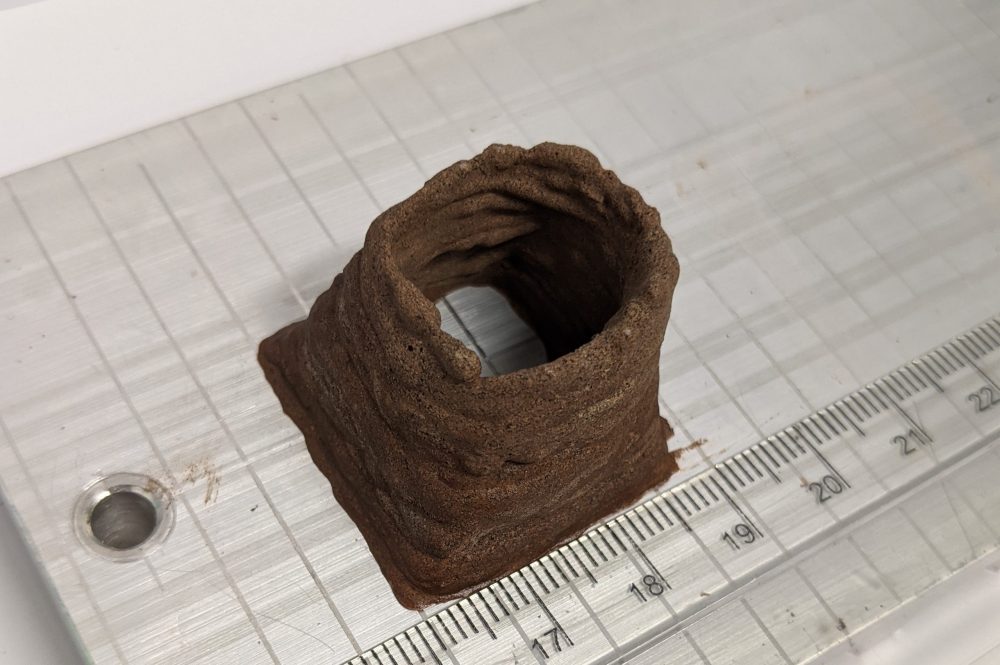Human colonies on Mars can — and probably should — be built using the actual blood, sweat and tears of the astronauts who build them.

That’s according to scientists at the University of Manchester, who say they’ve come up with a bloody brilliant way to solve the expensive challenge of sending building materials to Mars.
Water is scarce on Mars and it costs $2 million to send a single brick to the Red Planet, according to estimates. But astronauts can simply make their own concrete on-site using Martian dust and their own blood, according to findings published this month in the journal Materials Today Bio.
And it’s not a theoretical thing. According to the study, scientists have already made a concrete-like substance called “AstroCrete” using human blood and synthetic regolith, which is the scientific term for soil on Mars and the moon.
The mixture works because of human serum albumin, a common protein found in the plasma of human blood. The protein curdles when it’s dehydrated, creating a strong bonding agent that pulls the dust together.
The blood-and-dust mixture alone is equivalent to concrete, but researchers say it becomes even stronger when human urea is added to the mix. This golden touch — urea comes from sweat, tears and urine — increases the strength of AstroCrete by 300 per cent.
The AstroCrete itself is a dull shade of brown, but it can be shaped into any form and can even be used in 3D printing, according to the study.
The paper doesn’t say anything about the smell, but AstroCrete structures would likely protect a sealed inner shell made from something else, so one wouldn’t be in direct contact with the piss-and-blood bricks. Their main job, according to the paper, would be to keep out radiation and the fierce Martian dust storms.
“Scientists have been trying to develop viable technologies to produce concrete-like materials on the surface of Mars, but we never stopped to think that the answer might be inside us all along,” Aled Roberts said in a statement from the University of Manchester. “It is exciting that a major challenge of the space age may have found its solution based on inspirations from medieval technology.”

Get daily National news
Ancient Chinese and Roman builders once used ox and pig blood to strengthen the mortar in their buildings, and the same science is at work with AstroCrete.
“The concept is literally blood-curdling,” Roberts said.
Roberts and his team say that animal blood could eventually replace human blood in Martian construction projects, but that would only happen after we send cows to Mars.
In the meantime, researchers say more investigation is needed to figure out exactly how much blood an astronaut can give without keeling over.
On Earth, blood donors typically give a little less than half a litre in a session.
According to the researchers’ first estimates, an astronaut could potentially give enough blood to make a “standard red clay brick” in one month. That’s assuming they donate a litre of blood twice per week.
The material could go much farther if it’s used as mortar between sandbags. In that case, an astronaut could potentially produce enough AstroCrete to make room for a second astronaut over the course of a mission.
They also estimate that six astronauts on a two-year mission to Mars could produce about 500 kilograms of building materials over that time.

The University of Manchester team considered several other construction ideas involving human byproducts on Mars, in addition to their AstroCrete experiment.
One of those ideas involved using dust, urine, feces and blood to create slightly crappier versions of common metal tools.
“Unfortunately, due to health and safety concerns, we were unable to explore (that concept) in this study,” they wrote.
Too bad, huh?









Comments